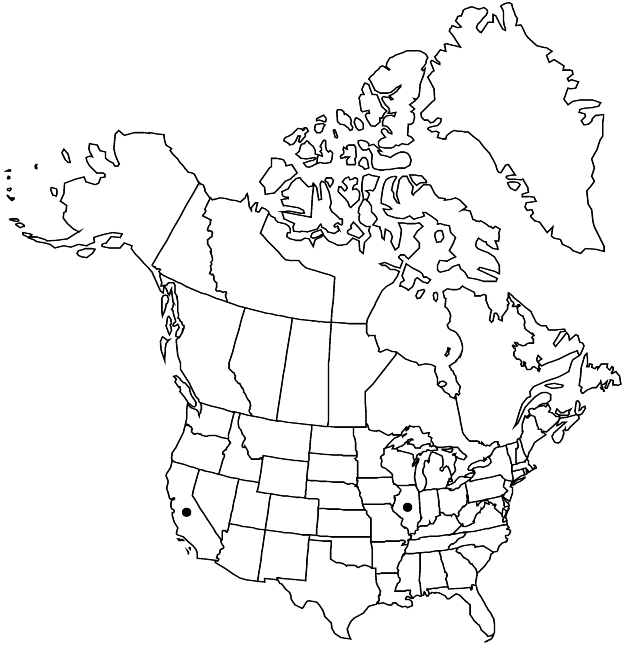Difference between revisions of "Cerastium diffusum"
Syn. Pl. 1: 520. 1805.
FNA>Volume Importer |
FNA>Volume Importer |
(No difference)
| |
Revision as of 22:33, 16 December 2019
Plants annual, with slender taproot. Stems decumbent or ascending, diffusely branched, 7.5–30 cm, densely covered and viscid with short, glandular hairs; small axillary tufts of leaves absent. Leaves not marcescent, sessile distally, spatulate to pseudopetiolate proximally; blade 5–10 × 2–4 mm, covered with short, glandular and eglandular hairs; proximal blades oblanceolate, apex obtuse; cauline blades ovate or oblong-ovate, apex acute. Inflorescences lax, 3–30-flowered cymes; bracts lanceolate to ovate, herbaceous, glandular-pubescent. Pedicels straight, ultimately erect in fruit, slender, 2–15 mm, much longer than capsule, glandular. Flowers 4(–5)-merous; sepals lanceolate, 4–7 mm, margins narrow distally, apex acute or acuminate, glandular-pubescent, hairs usually not projecting beyond apex; petals ca. 3 mm, ca. 0.75 times as long as sepals, apex 2-fid; stamens 4(–5); styles 4(–5). Capsules narrowly cylindric, nearly straight, 5–7.5 mm, 1–1.5 times as long as sepals; teeth 8 or 10, erect, margins convolute. Seeds reddish brown, 0.5–0.7 mm, bluntly tuberculate; testa not inflated. 2n = 72.
Phenology: Flowering spring.
Habitat: Sandy places on coast, rarely inland in similar places and on railway ballast
Elevation: 0-300 m
Distribution

Calif., Ill., Europe.
Discussion
This species was abundant on the sandy shore at Fort Bragg, Mendocino County, California, in 1985 and should be looked for elsewhere. The entirely herbaceous bracts, short capsule, and the floral parts usually in fours identify this small weedy species.
Previous reports of this species (as Cerastium tetrandrum) by J. A. Steyermark (1963) from Missouri and M. L. Fernald (1950) from Virginia are referable to C. pumilum and C. brachypetalum, respectively.
Selected References
None.